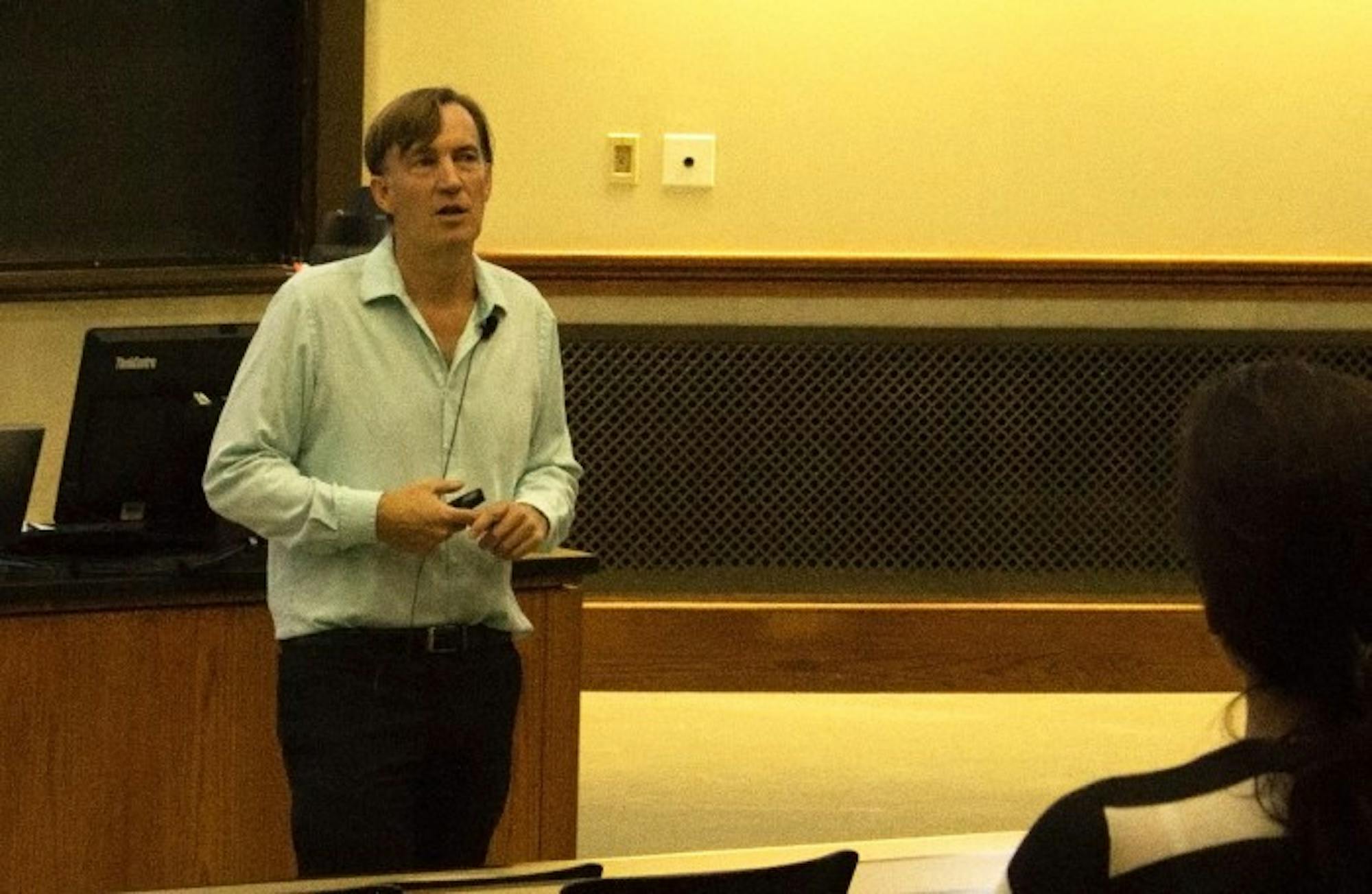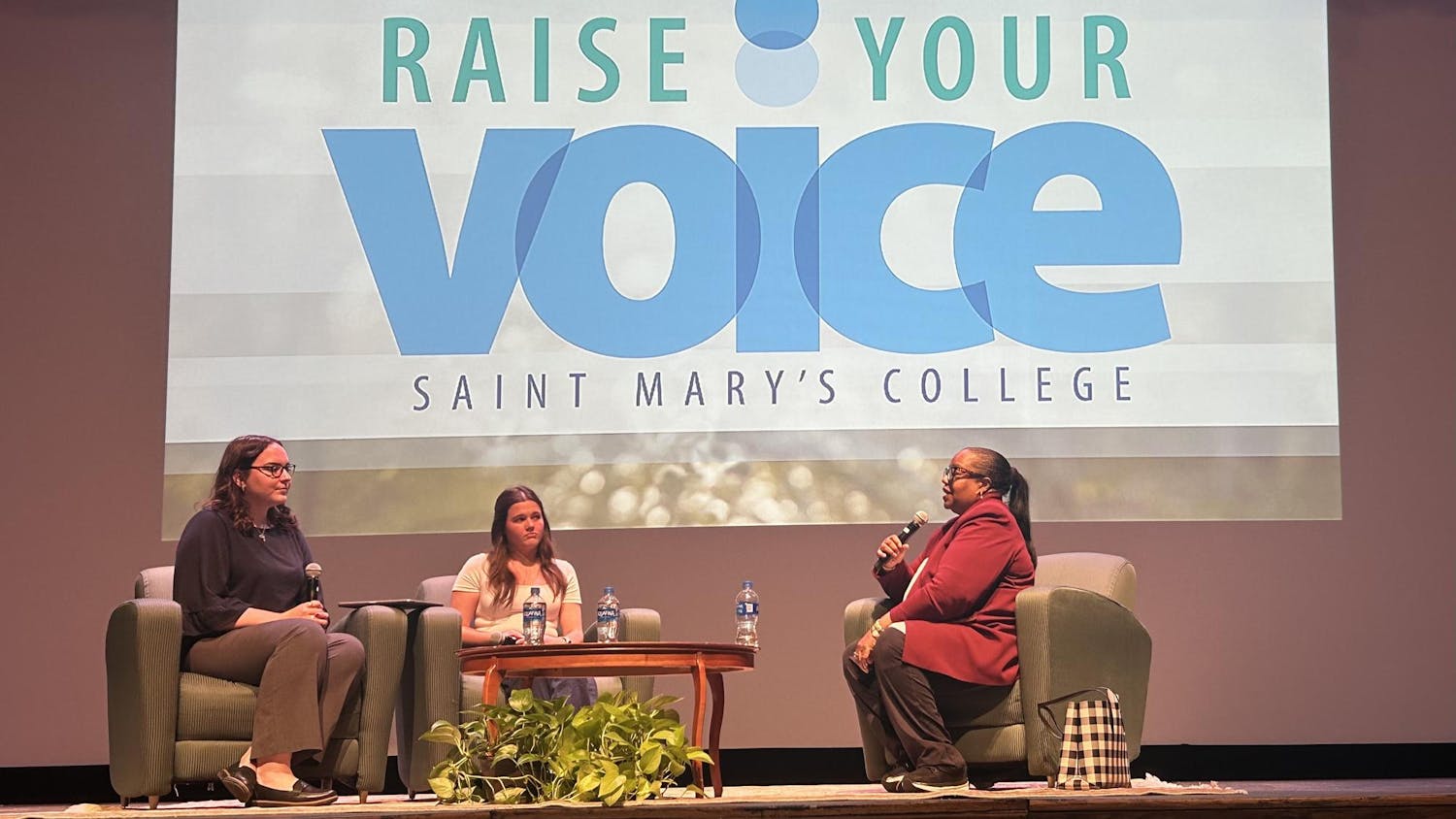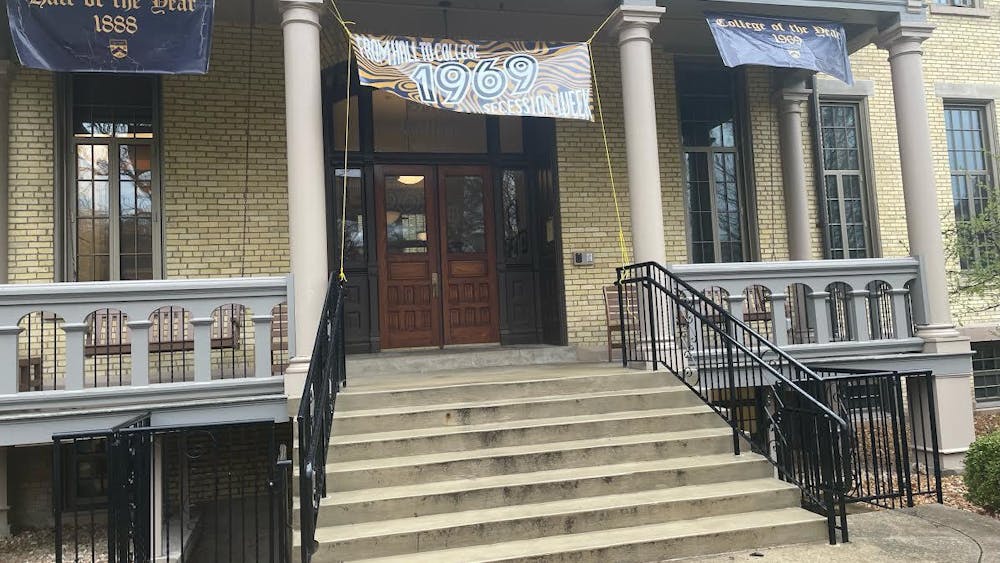An interdisciplinary team of Notre Dame faculty members came together in order to discuss the detrimental effects of lead in South Bend homes with the local community. The lecture, titled “Getting the Lead Out: Reducing South Bend’s Exposure to Lead,” was part of the Our Universe Revealed series and took place in Jordan Hall.
Notre Dame faculty members Graham Peaslee, from the Department of Physics, Marya Lieberman, from the Department of Chemistry and Biochemistry and Heidi Beidinger, from the Department of Biological Sciences and Eck Institute for Global Health, spoke about the research they have conducted regarding this issue.
Peaslee said lead exposure is still a problem in the United States, and especially in South Bend, which has six times the amount of Flint levels compared to the rest of the country. Less than ten percent of children are tested for lead levels, he said, which makes it difficult to assess the threat South Bend children could face.
He stated that elevated Blood Lead Levels are the most prominent in children, as a result of more open exposure to lead in older homes.
“Legacies from leaded paint and gasoline in home built prior to the 1970’s still possess harmful toxins,” Peaslee said.“Lead passes from the paint in these homes’ walls to the dust in the air, to human bodies, to bones.”
When lead was discovered as an extremely dangerous toxin, bans were placed against its usage in homes and cars. Peaslee said the Lead Contamination Control Act in 1988 banned lead in virtually all gasoline, and by 1995 lead in gas was completely banned. Likewise, in 1978 lead paint was prohibited in residential houses.
“Lead blood levels in the United States decreased dramatically as more bans against lead were set in place,” Peaslee said.
However, he added, homes built prior to these prohibitions still pose a threat to residents’ safety — especially for children.
“In the production of cars and paint, lead was desirable because of its anti-knock power in cars, and anti-aging supporter in paint,” Peaslee said.
Despite its practical usage in utilities, lead has recently been linked to several neurocognitive disabilities, attention deficits, behavioral problems, lower IQ scores and even lower socioeconomic statuses, Peaslee explained.
“This is a toxin that is not safe for the body in any amount,” Peaslee said.
Marya Lieberman from the department of chemistry and biochemistry went on to describe how exactly lead interacts with the body.
“Humans usually come into contact with lead through ingestion and inhalation,” she said.
From this initial exposure, Lieberman said, the toxin travels through the bloodstream, to soft tissue, and even reaches bone.
“Lead spreads everywhere throughout the body,” she said.
The human body finds it difficult to remove and filter out lead’s poisonous effects, Lieberman said.
“Its half life in blood is 25 days, in soft tissue 40 days, but once it reaches the bone, lead remains for years,” she said.
Lieberman explained that babies from the ages of 6-8 months old are at the highest risk of being poisoned.
“Babies crawl on the floor and touch the walls around them, exposing themselves more so than adults to paint in households,” she said.
Furthermore, Lieberman explained, children absorb 50 percent of lead into their bodies, compared to only 20 percent for adults.
“Children’s high metabolism soaks up the toxins at a much faster rate than their parents,” she said.
Lieberman said the body’s tolerable daily intake of lead is equivalent to less than 1 grain of salt, and most people are exposed to much more than this on a daily basis.
“There are two ways to measure Blood Lead Levels, which consist of the ‘fingerstick test’ and the venous test,” she said.
The “fingerstick test” provides results within minutes, but is much less accurate than the venous test, which takes weeks to give results, Lieberman added.
Beidinger said Notre Dame intervened on this issue last January with a Notre Dame Lead Innovation Team.
“Our mission is to reach the South Bend community and create a community effort to halt lead poisoning in this area,” she said.
Five faculty members collaborated with ten graduate and undergraduate researchers this summer to develop a community based approach to South Bend lead exposure. First, the team analyzed current lead screening tests, Beidinger said.
“Less than ten percent of children in the St. Joseph Community have been tested for lead poisoning between 2005 and 2015, and we cannot case manage between the ages of five to ten years old, because of budget cuts from the St. Joseph County Health Department,” Lieberman said.
Because of these fundamental screening issues, Lieberman said, there is no comprehensive understanding of what lead poisoning looks like in St. Joseph County.
“In addition to this finding, communities of color are disproportionately burdened by this lead exposure in South Bend,” she said.
Together, the research team concluded a number of findings based on their investigation of six South Bend homes with lead paint.
“Most hazards are hiding in plain sight, such as on coffee table with ceramic tile, on ceramic teapots and kitchen tables,” Lieberman said.
The faculty team has a number of grant proposals ready to initiate and is planning to build more collaborations to foster a stronger push toward improvement.
“We need city, county and state wide lead efforts, and would like to offer a new course at Notre Dame called ‘Chemistry in Service to Community,’ to study this problem,” Peaslee said.
Their overarching efforts are now focused on connecting Notre Dame efforts with the South Bend community in order to eliminate lead poisoning.
“We would like to create citizen scientists within South Bend, and advance the technologies we use to study lead poisoning,” Peaslee said. “We hope that these efforts will lead to more Blood Lead Level screening in St. Joseph County.”













